The aim of this thesis was to develop a suitable customer strategy and segmentation plan for the non-profit business company, the Finnish Seamen's Mission in the Benelux. The proposed customer strategy and segmentation plan forms the basis for the development of the Mission's membership issues as well as different CRM practices in the future as well.
Background of the Study
The Finnish Seamen's Mission in the Benelux operates in Belgium, the Netherlands and Luxembourg. The Finnish Seamen's Mission in Benelux has a long history of working in the Benelux area.
Research Problem and Objectives
The churches in the Benelux merged at the beginning of 2011 under one director. Although The Finnish Seamen's Mission is a non-profit organization, it needs a good CRM strategy to survive as its business relies heavily on various types of donations and is not driven by profit.
Limitations of the Thesis
Structure of the Thesis
It includes the basic theory of the customer segmentation process and criteria and a brief description of segment-specific management. Consequently, the last subsection focuses on summarizing, defining and using CRM as a tool for a more customer-oriented organization.
Customer Relationship Management – CRM
Defining Relationships
This means that the organization and the customer change little or no information during the transaction. The more information the customer provides to the organization, the better the organization can serve its customer.
Satisfaction, Loyalty and Trust
The main rule is that if customer expectations are met or exceeded, the customer is satisfied. On the contrary, if the needs and expectations are not fulfilled, the customer will be dissatisfied.
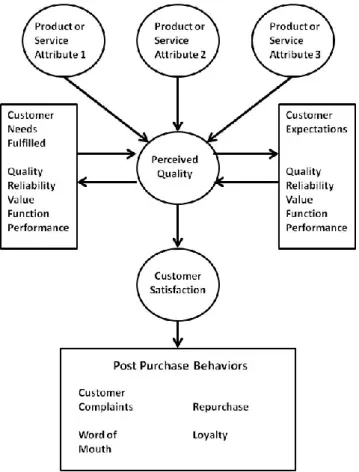
Managing Customer Relationships
Customer Strategy
- Customer Value
- Customer Relationship Strength and Length
- Customer Strategy Process
- Different Customer Strategies
Potential value can be defined as the possible future value of the customer to the organization. Customer strategies can be classified based on the alignment of the organization and the customer.
Customer Segmentation
Customer Segmentation Process
The first stage in the customer segmentation process is to collect and analyze various background materials obtained, for example, from the organization's databases and form a so-called "long list" of various segmentation criteria. This 'long list' of segmentation should be based on the internal and external perspectives of segmentation described earlier. In the second phase, a so-called “shortlist” is drawn up containing the most essential segmentation criteria.
The third stage in the customer segmentation process involves choosing the actual segmentation criteria based on the "shortlist" created.
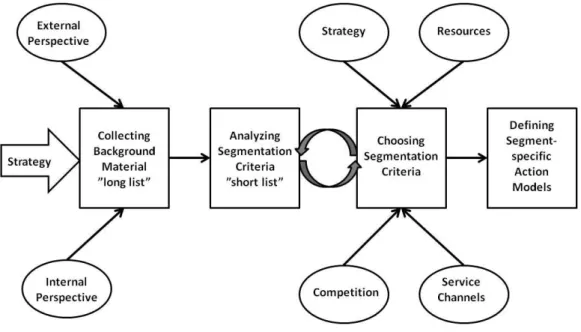
Customer Segmentation Criteria
For example, by creating a positive brand or image and experiences, it is possible to win over these customers. Segmentation criteria can be based on the organization's strategy and the external and internal perspectives of segmentation. It is essential that the organization can identify the customer from the database and in a service situation.
The ability to reach the customer also means the ability to organize the entire organization according to the customer segments.
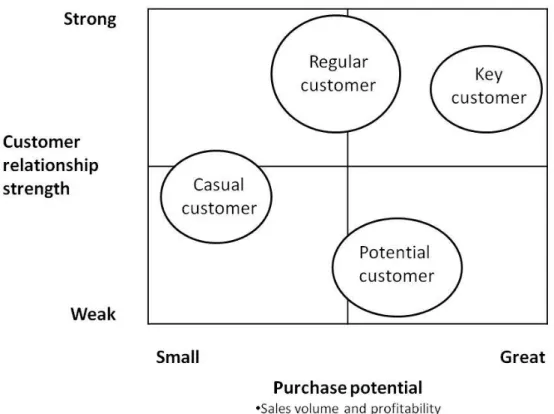
Managing Customer Segments
It is also important to consider and implement the designed segmentation into every process and decision throughout the organization. In segment-specific management, it is essential to know customers and segments well. Their responsibility is to collect information, store it, share it and generally take care of relations with customers of a certain segment.
For example, it is essential that an organization appoints special contact persons for key customers as they require special care and service.
CRM and Customer-Oriented Organization
In addition, non-profit organizations are largely dependent on various donations and gifts. Despite the non-profit aspect, CRM and customer focus are just as important a practice as they are for for-profit organizations. Nonprofit organizations have relationships with many different types of people and constituencies, such as funders, donors, volunteers, and ordinary consumers.
For non-profit organizations, increasing the value of customer relationship means, for example, increasing the amount and frequency of donations, volunteering and the level of satisfaction of consumers.
Overview of the Case Company
The Finnish Seamen’s Mission
Third, the main points of the actual results of the survey are summarized and displayed with the help of various graphs. At the end of 2010, the number of actual employees was 39, which includes people working in the central office in Helsinki and in churches in Finland and abroad. The future vision of the Finnish Naval Mission is to withstand economic fluctuations and invest in a competent and dedicated workforce and focus on its successful activities.
Risks in the operation of the mission are related to the current economic situation, inadequate funding and human resources.
The Finnish Seamen’s Mission in the Benelux
Also an important part of the mission's services are various religious ceremonies and activities such as special clubs. The clients of the Finnish Seamen's Mission range from truck drivers to government employees working for the European Union. Most clients in Brussels are therefore people who work for the commission, for example.
This creates challenges for the mission, as the premises in the Netherlands are only in Rotterdam, while people live in different parts of the country.
Research Methodology
Research Process
Research Methods
The Questionnaire
Validity and Reliability
The research results mostly give demographic data that do not provide much in-depth information. However, with the help of the central results, theory and other previously conducted research, it is possible to find a solution to the research problem. It was not possible to influence the results as the respondents answered themselves without the presence of the researcher.
In addition, the research can be considered reliable because many of the results are also consistent with previous research.
Research Results
Demographic Data
The next three questions were about the size of the household, the number of children and the age distribution of the children. Based on the results, more than half (53.2 %) of the respondents were children born in the 21st century. When asked about net income per month, 26.1% of respondents chose not to answer the question.
The question about the duration of the stay abroad was divided into two separate questions.
Services
In most cases, respondents from all age groups assessed their stay abroad as permanent, with the exception of respondents under 25 years of age, as they are mostly students. Another group estimated that they would stay abroad permanently, and another group estimated that the stay would last from one to five years.
Membership and Communication
In general, information about the activities was received quite well, as most of the respondents answered a lot or to some extent. However, quite a bit of information was received on the member questions, as many of the respondents answered to some extent, little or not at all. In the second question about communication, it was asked which is the best way for the respondent to get information about the mission's activities.
The options given were the mission's own magazine, websites, email, social media or other.
Previously Conducted Research
Both of the studies reviewed were carried out for the Finnish seamen's mission in the Benelux area. In the survey, most people had moved to the Benelux area for work. The profile of the respondents corresponded quite well with the research results in this thesis.
The research problem of the thesis was to find a proper customer strategy and segmentation plan for the Finnish seamen's mission in the Benelux.
Summary of the Research Results
In the conclusions, the focus is on Belgium, and more specifically on Brussels, because most of the responses come from there. The most popular services of the Mission were the cafeteria, the Finnish shop and the library and can therefore be considered as the central services that can be further developed. The number of current members of the mission was low compared to the total number of respondents.
Respondents were generally not aware of the membership benefits and many were also unable to evaluate the amount of the membership fee.
Suggestions for Customer Strategy
Based on the research results, the Mission in the Benelux, for example, offers many different services for all kinds of people. Value through products can be improved by developing the product line in the Finnish store and the cafeteria based on the comments, needs and ideas of the customers. Here, a seven-phase customer strategy process for the Finnish Seaman Mission in the Benelux is proposed (see Figure 4).
The process is illustrated in the form of a circle, as the customer strategy process is intended to be continuous.
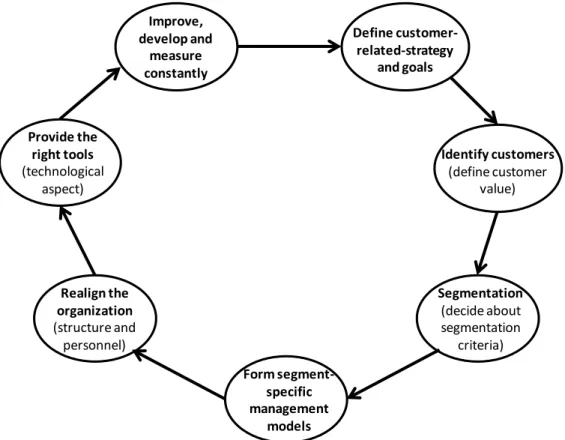
Suggestions for Customer Segmentation
In the conducted research, the focus was on demography, but with the help of theory and other research, it is possible to form segmentation based on other criteria as well. Perhaps the simplest way to segment customers in the case of the Finnish Seamen's Mission in Benelux is to divide them based on age or status, for example, into families, singles, students and pensioners. In the results of the research, many of the respondents estimated that their stay abroad was quite permanent.
Segmentation based on purchase behavior can be particularly useful for Finnish shop and cafe purposes.
Framework for Segmenting Customers
In this case, the group of most important customers consists of those who are actually members of the mission. In the case of the Finnish Seamen's Mission in the Benelux, regular customers are people who are not members but still regularly use the services of the Mission. The satisfaction of key customers must be kept high and constantly monitored.
Due to long distances, not everyone is able to regularly use the services of the Mission.
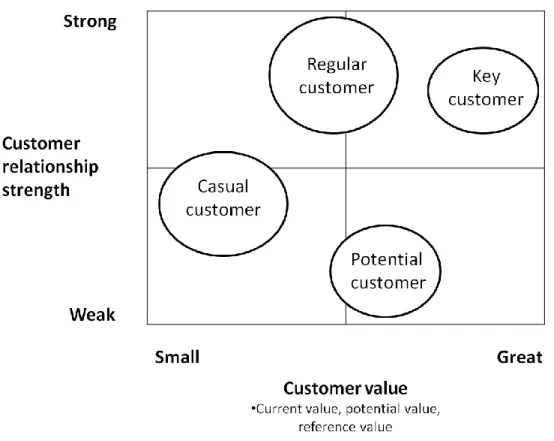
Suggestions for Further Research
The churches of the Finnish Seamen's Mission in the Benelux were united at the beginning of 2011. Mission facilities are located in Brussels, Antwerp and Rotterdam where comprehensive services are offered to all kinds of people. The purpose of this study is to develop the activities of the Mission and aim to provide concrete benefits of membership in the future.
Here you can write your comments/ideas for the Finnish seamen's mission in the Benelux.